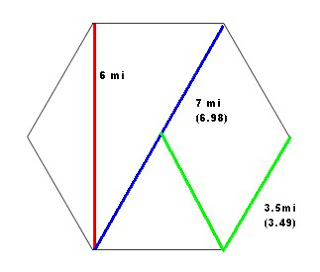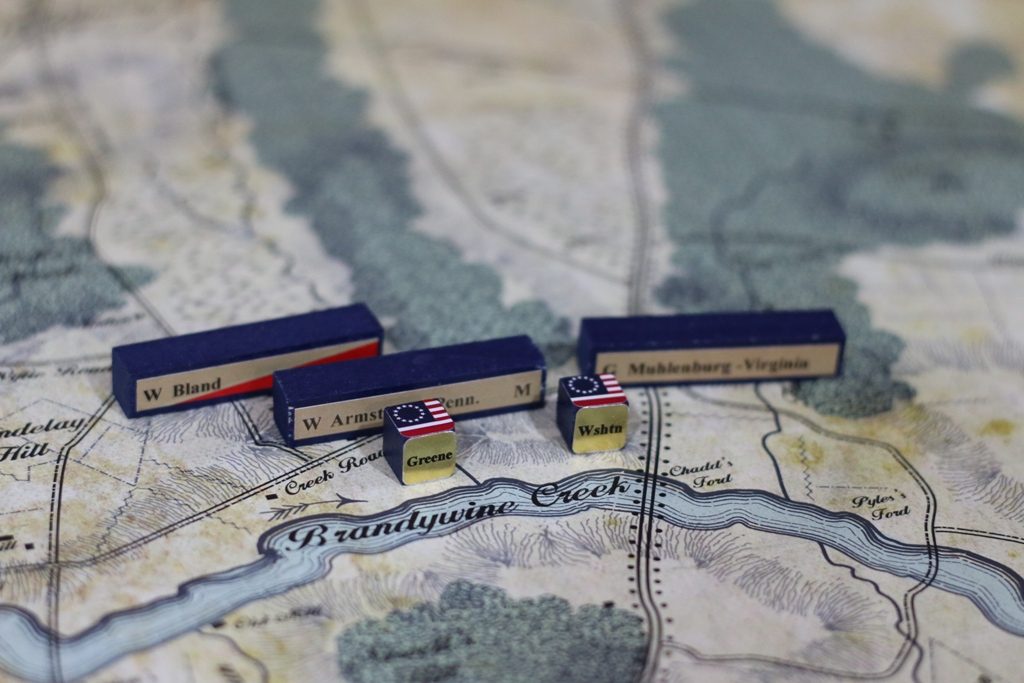
Why do we use hexes or areas in wargames? Presumably, to make them easier. How do the pieces move? Well, you just move them from space to space. Just like Monopoly. Everybody understands that mechanic. It is more simple to explain in rules and for people to learn the game. How many spaces does infantry move? Armor?
One of our primary design goals being brevity in rules, we analyzed numerous wargame rulebooks. An amazing thing that stood out to us was: the huge amount of pages and text dedicated to explaining hexes and/or areas. Fine print. Triple column. Full sized pages. Take a look at the rules for the games you are playing now. How many words explaining moving? Into hexes, out of hexes, across these certain hexsides but only in these cases. Then there are hex ZOCs. How does that affect movement? Does it work the same for supply? What if there is a national border? An enemy ZOC? What terrain is it if there are multiple types? Is the hex side terrain different than in the hex? Is the river in the hex or along the hex side? How do pieces see into, out of and through hexes? To the center of the hex or just a corner? Is there facing? How does that work? Do they face the spine or the side? Where is the flank? It goes on and on and on.
I thought this was supposed to make the game more simple? By comparison, the original Kriegspiel rules were very simple. How do pieces move? You just pick them up and move them. How far? This far by foot, that far mounted. Much like miniature rules. Real simplicity. Ironic that something the wargame industry invented for simplicity and clarity resulted in so much complexity and confusion.
We noted an added benefit also: The map looks much better! Any way you do it, hexes and areas are just plain ugly. Don’t believe me? Compare the Pub Battles map to the average wargame.


I rest my case.

Do you measure from the front or the middle? What if the pieces aren’t the same size? How do you handle turning? How do you measure in a group of pieces without knocking the others around? Do you allow premeasuring to insure you’ll move exactly where you want to? How does terrain affect units?
Miniatures players will tell you, hexless games are no less complex.
There might be some truth to this. I suppose you could make anything insanely complex. Lol… Congress and IRS seem to have that down pretty good. What do most games do?
Here are some interesting facts:
Word Count Rules
GMT Brandwine: 12,628
Pub Battles: 1,849
The basic core rules are: 577
Play time
Pub Battles: 20-60 min.
I couldn’t find anything on GMT. Anybody know? Most battle games I’ve played take days to get through the whole thing!
This raises a good question: Are the Pub Battles rules shorter and faster playing because of how we designed it? Or because of the mini style movement? Would you say the mini style movement had no impact at all?
I have not played pub battles system but i did come up with my own inherited movement system. I wonder if it’s similar to mine.
‘Inherited’? 🙂 Your own, home grown mini system? What do you do?
I have a hybrid movement system that allows free movement but limits wheels to increments of 45 degrees. A mapboard has a collection of cells, each consisting of a square bisected by two 45 degree lines, to facilitate the 8 possible directions a base may face. Movement is in basewidths. An advance of one or less than one basewidth costs a basewidth. A 45 degree wheel costs a basewidth. A ninety degree wheel costs 2 basewidths. Wheels are not possible past 90 degrees.
So to advance half a basewidth, wheel 45 degrees, then advance 1 1/2 basewidths costs 1 + 1 + 2 basewidths = 4 basewidths. Much simpler than that agonizing measuring with a stick or tape.
Slick! What scale of unit is moving?
a typical 15mm base – 4cm wide.
I’m also working on a diceless combat system that is completely chance-free, caters for simultaneous fire – counter-fire, charge – counter-charge and melee – counter-melee combat. It has few modifiers, is totally determined, but gives outcomes that are impossible to calculate even in the short-term. You have to rely on tactical skill and a good sense of timing, and if you win you can take full credit for it.
The whole gaming system is called Optio. It is limited to Ancients at present but easily applicable to pike and shot, horse and musket, etc. I’ve been developing it on and off for years, getting the historicity right first and now concentrating on playability.
But enough of me. I love the mechanisms used in Pub Games. A gem of simplicity. When I have a bit of spare cash I will be buying one.
Wow using a Ruler is “agonizing” That’s quite a stretch .